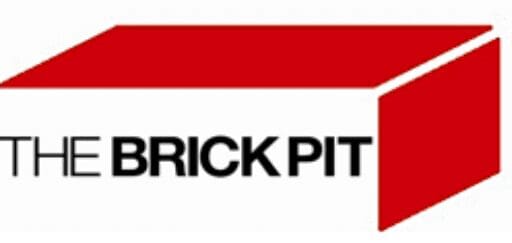Looking for information on how many bricks per m2? Answer: Around 60 standard bricks (215mm x 102.5mm x 65mm) are needed per square meter when accounting for 10mm mortar joints. This can vary slightly based on brick size, mortar thickness, or wall design. Always factor in 5-10% extra for cuts or waste.
Want to drill down more? Keep reading.
Hey there, fellow brick enthusiast! So, you’ve decided to take on that backyard project, garden wall, or maybe even a full-on BBQ pit (we see you, grill master). But now you’re stuck wondering, “How many bricks do I actually need per square meter?” Don’t worry—you’re not alone. At The Brick Pit, we’ve fielded this question more times than we’ve sipped coffee on a Monday morning. Let’s break it down without breaking your spirit.
Why Brick Size Matters (No, Seriously, It’s Not Just About Aesthetics)
First things first: bricks come in all shapes and sizes. Think of them like jeans—some are skinny, some are boot-cut, and others are… well, let’s just say “unique.” The size of your brick directly impacts how many you’ll need per square meter. Shocker, right?
Here’s a pro tip we’ve learned from years of stacking bricks and soothing panicked DIYers: always check the brick dimensions before ordering. A standard Australian brick (yep, we’re talking local here) is usually 230mm long x 110mm wide x 76mm high. But “standard” is a loose term. Some bricks are thinner, thicker, or shaped like Lego blocks for your inner child.
The Magic Formula (No, It’s Not Hogwarts-Level Math)
Let’s cut to the chase. To calculate bricks per m²:
- Measure your brick’s face area (length x height).
- Convert that to square meters (because metric system FTW).
- Divide 1m² by your brick’s face area.
For example, using a standard brick:
- Face area = 0.230m x 0.076m = 0.01748m²
- Bricks per m² = 1 / 0.01748 ≈ 57 bricks
But wait! Before you start bragging to your mates about your newfound math skills, remember: this doesn’t include mortar joints. Mortar is like the unsung hero of bricklaying—it holds everything together but also eats up space.
Mortar: The Silent Brick Thief
Ah, mortar. The clingy friend who has to be part of every brick’s personal space. A typical mortar joint is 10mm thick, which might not sound like much, but it adds up faster than your Netflix watchlist.
Let’s recalculate with mortar:
- New brick face area = (brick length + mortar joint) x (brick height + mortar joint)
- For our standard brick: (0.230m + 0.010m) x (0.076m + 0.010m) = 0.240m x 0.086m = 0.02064m²
- Bricks per m² = 1 / 0.02064 ≈ 48 bricks
FYI: That’s a 15% difference! Skip the mortar math, and you’ll either drown in leftover bricks or face a mid-project meltdown.
Your Cheat Sheet: Bricks Per m² Table
Here’s a table we swear by at The Brick Pit (and yes, we’ve tested this on actual walls, not just spreadsheets):
| Brick Type | Dimensions (mm) | Bricks Per m² (No Mortar) | Bricks Per m² (With 10mm Mortar) |
|---|---|---|---|
| Standard | 230 x 110 x 76 | 57 | 48 |
| Double Course | 230 x 110 x 162 | 27 | 23 |
| Thin Brick (Veneer) | 290 x 90 x 40 | 38 | 32 |
| Pavers | 200 x 200 x 50 | 25 | 20 |
Pro Tip: If math makes you want to yeet your calculator into the sun, just give us a shout at The Brick Pit. We’ll sort you out—no judgment, promise.
“But What If I Mess Up?” (Common Mistakes We’ve Seen… and Fixed)
Let’s get real: even seasoned builders occasionally face the “oops, I ordered 500 extra bricks” moment. Here’s how to avoid the classics:
- Forgetting Waste Factor: Add 5–10% extra bricks for cuts, breaks, or future repairs. Because gravity loves testing your bricklaying skills.
- Ignoring Brick Type: Retaining walls need engineering bricks; garden paths can use pavers. Mixing them up? Not a vibe.
- DIY Overconfidence: Look, we all love a weekend project, but if your “wall” starts resembling the Leaning Tower of Pisa, maybe call a pro.
Fun story: One customer tried building a pizza oven with decorative bricks. Let’s just say… it’s now a very expensive garden ornament.
Why Bother Calculating? Just Wing It! (Said No One Ever)
Sure, you could eyeball it and hope for the best. But here’s why precision pays off:
- Budget: Bricks aren’t cheap. Overestimate, and you’re wasting cash; underestimate, and you’re stuck waiting for deliveries.
- Aesthetics: Irregular gaps or mismatched bricks scream “my first DIY project” (and not in a cute way).
- Time: Ever had to pause mid-build because you ran out of materials? Yeah, it’s as fun as stepping on a Lego.
3 Questions We Get Daily (and Our Answers)
- “Can I reuse old bricks?”
Absolutely! But check for cracks or weathering. Old bricks add charm, but structural integrity matters. - “What’s the cheapest brick type?”
Common clay bricks are wallet-friendly, but durability varies. Pavers cost more upfront but last longer. IMO, invest in quality—you’ll thank us later. - “Do I really need mortar?”
Unless you’re building a Jenga tower, yes. Mortar prevents shifting, water damage, and existential crises when your wall collapses.
Final Thoughts: Let’s Build Something Awesome
At the end of the day, bricklaying is equal parts art and science. Whether you’re crafting a cozy fire pit or a fortress for your succulents, getting the brick count right saves time, money, and sanity. And hey, if you’d rather leave the heavy lifting to someone else, The Brick Pit is here to help. We’ll hook you up with the right bricks, mortar, and advice—no cryptic math required.
Ready to start stacking? Give us a call or swing by. We’ll even throw in a free coffee (because caffeine makes everything better).
Check out these related articles


